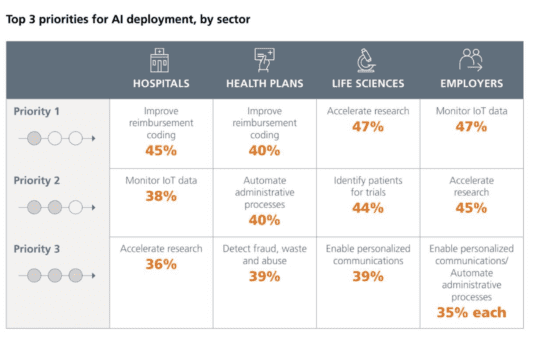One salient issue is deciding whether to build or invest in a health AI solution is whether it solves a big enough problem. There are now hundreds of solutions that have been approved by the FDA and have not seen much commercial traction. There could be multiple reasons for this but one of the key issues is that many of them do not solve a problem that is important or urgent enough to be included in the technology budget of the customers. No matter how elegant the solution and how well it works, if the problem it is solving does not have champions in the organizations who are screaming for it, it won’t be a priority to buy.
For example, I’ve seen AI solutions that automate a preliminary reading of an echocardiogram for cardiac patients. It measures the ejection fraction and records some key measurements. This is a nice solution. Unfortunately, that’s all it is! The automation of measurements saves some time for the technologist performing the procedure and quantifying the ejection fraction gives the cardiologist more confidence on a key number. However, these benefits are marginal, at best. The technologist will still need to do the procedure and the cardiologist will still read the echo. Given the implementation steps involved, selection process, and costs in acquiring the technology, it’s hard to imagine it would make the list of the technologies the medical center would invest in. That is because there are probably more urgent needs that technology can help with and the resources will be directed toward those needs.
Staying with the clinical theme here, sepsis is a major issue affecting patient outcomes, hospital quality metrics and their bottom lines. It leads to longer hospital stays and higher costs that can turn a profitable hospital visit into a non- profitable one. That means that all of the incentives are aligned to use AI to better manage sepsis. This is a great example of improved patient outcomes, decision support for clinicians and economic benefits for institutions. This trifecta leads to a strong business case.
The demonstrated benefits of AI for the management of sepsis highlights one of the most promising short-term clinical use cases for AI: the management of critical patients. First, diagnostics and treatment for these patients is overly challenging and needs vast expertise. If AI can take over some of these challenging steps, they’ll be standardized and improved. Second, a humongous amount of data is gathered when treating critically ill patients. Third, outcome measures in critical medicine are truly black and white. In many AI projects, the study group can’t even agree on the study feature, such as whether a spot on a lung x-ray scan is a tumor, infection or an artifact. Teaching AI with debatable data measures and features will rarely, if ever, lead to success. In critical medicine, death or bleeding in the brain on a computed tomography scan is rather unambiguous
Evaluating these issues before building a solution is critical. Unfortunately, technology budgets are limited and there is very deliberate prioritization of how that budget is spent. If you have a solution that works and you have very good evidence that it works and provides benefits, but those benefits are not meaningful enough, the road to commercializing that solution will be bumpy.






